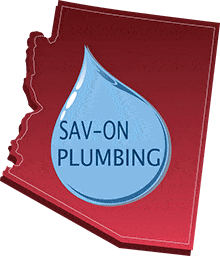Getting a building permit can be a hassle. You are often required to submit a set of plans to obtain the permit. And then there’s those pesky permit fees.
Many plumbing projects don’t require a building permit. For instance, in the city of Glendale, Arizona, if a homeowner replaces his or her own water heater a permit is required; if the same job is done by a licensed contractor, like Sav-On Plumbing, the city does not require a permit.
Permits are generally not expensive. They are based on the dollar value of the improvement you make. Permits also serve other functions—they try to protect the consumer from shoddy or illegal workmanship by unqualified contractors. By the same token, they also protect the contractor from false or frivolous claims by the homeowner that allege poor workmanship, so obtaining a permit is kind of a win-win situation.
If you complete a job where that city or regulating agency requires a permit but you do not obtain one and you get caught (some neighbors have been known to turn in another neighbor who fails to pull a permit), you will have to pay double the normal permit fee. Worse, there’s also the possibility that you could be required to tear out all the work you have done. While this is the extreme, it is a possibility. For example, my father-in-law commissioned a custom fireplace from a wonderful masonry craftsman in Glendale as part of a remodel conversion of a garage into a livable space. Once the craftsman completed the massive fireplace, the inspector noted he had not inspected the fireplace nor was it sufficiently described in the plans. The City of Glendale building inspector insisted they drill holes in the fireplace at certain intervals to ensure the fireplace contained sufficient rebar. So there are many aspects to building permits, and this article is just a small part of what can be a complex, irritating process.
If you’re contemplating a remodel or repair, call us. We can review your project and discuss your options and provide an estimate.
You’re always dollars ahead by using a licensed, bonded and insured plumbing contractor.


